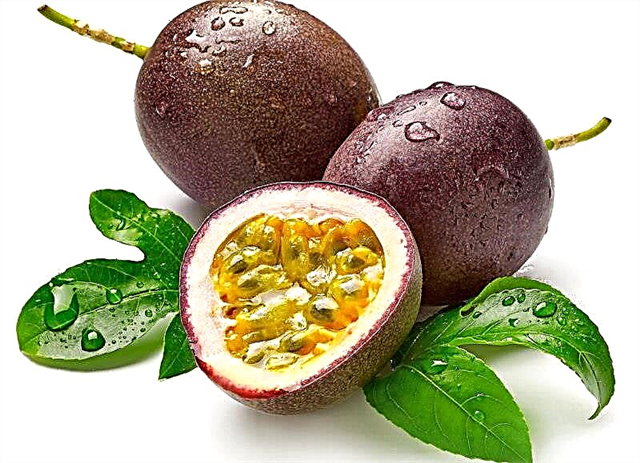The fruit markets of this country are striking in their variety. No wonder Vietnam is one of the largest suppliers of exotic fruits in the world. The rich content of useful macro- and microelements, the absence of chemical additives (to accelerate growth, or increase shelf life), make them quite valuable and popular. Let's take a look at the most popular fruits in Vietnam that you should definitely try.
Mango

Vietnamese mangoes are somewhat different from Indonesian, Thai, or Filipino. They are sweeter and very tender, thicker consistency.
Mango season: February to May.
Useful properties of mango
The fruits contain many vitamins and minerals, as well as enzymes that have a positive effect on digestion. Mango is also widely used in traditional medicine. It helps to improve brain function, stop blood, strengthen the heart muscle, but it can also cause allergies due to the substance urushiol it contains.
Also, do not get carried away with this fruit in large quantities, because it has a laxative effect. It is also better not to use it with alcohol-containing drinks. If you follow your figure and count calories, then it will be useful for you to know that 100 g of mango contains 65-70 kcal (proteins - 0.55 g; carbohydrates - 18 g; fats - 0.28 g).
How to determine the ripeness of a mango
The ripe fruit has a rich yellow color and aroma. The color can also be interspersed with red and green. If you squeeze it slightly, then it should give in a little. If you want to take the fruit to Russia, then choose a slightly unripe mango and store it at room temperature.
For lovers of this fruit, we recommend visiting the Mango Rooms restaurant. It is located in Hoi An. It is not hard to guess what the main ingredient is used for cooking.
Longan (Dragon Eye)

Small, round fruits, light brown in color. They grow in bunches. The stone is inedible, like the peel, it is easily separated from the pulp. Transparent and juicy with an indescribable taste, it tastes like grapes or melons. The peel itself, depending on the variety, can have a yellow, red or brown tint.
Fruit season: June to August.
Benefits of Longan
It can be noted that it is used by:
- as an antioxidant
- for the treatment of cancer, hernia, scabies, digestive tract
- to lower body temperature
- against fatigue and dizziness
- to normalize sleep
- to improve vision
- as a sedative
100g of fruit contains about 60 kcal (proteins - 1.31g, fats - 0.1g, carbohydrates - 14.04g). Even those who follow a diet can safely afford such a delicacy.
How to determine the ripeness of a longan
It is almost impossible to determine the ripeness of a longan by its appearance. The easiest way is to just taste it. It should be sweet. If the fruit is sour, then it is not yet ripe. It is also important to pay attention to the hard shell. It should be free of any damage. Do you want to bring fruit to Russia? Then choose a dragon's eye with a slightly sour taste. Just a couple of days and it will ripen. Can be refrigerated.
Lychee

Lychee is similar in taste and size to longan. Only sweeter, and the rind is bright, red, slightly rough.
Season: May-July.
Useful properties of lychee
Lychee has various medicinal properties, but you should not get carried away. If consumed excessively, it can cause allergies and problems with the oral mucosa. Why is this fruit so useful? Regular consumption of lychee allows:
- lower cholesterol
- normalize the functioning of the liver, cardiovascular system, pancreas
- improve memory
- increase potency
It is also recommended for chronic constipation, due to its laxative effect (mild enough, you should not worry), for intestinal disorders. The best part is that all these beneficial properties are preserved even in dried and canned fruits.
Can and should be consumed by those who follow a low-calorie diet or proper nutrition. Lychee will not harm your figure in any way. In 100g about 70 kcal.
How to determine the ripeness of a lychee
First of all, we evaluate the appearance of the fruit. The casing should be intact, without damage or dents, of a deep red (but not dark) color. Test - shake the lychee. If it is ripe, then you will hear sounds, if not, then it is better not to buy such a fruit. Pay attention to the scent. Too cloying indicates that the lychee is overripe.
Durian

Due to the not very pleasant smell, it was forbidden to be transported on airplanes; many catering establishments even have signs on the door with the image of a crossed out durian. The taste of its pulp was highly appreciated by many gourmets; it resembles fruit and berry yogurt. Having penetrated under the thick green peel with sharp thorns, you just need to hurry up until the smell becomes pungent. This is due to the fact that it contains volatile sulfur compounds.
Season: May to November.
Useful properties of durian
Be careful if you have hypertension as it raises your blood pressure. Durian is highly nutritious. Also, this fruit helps to remove harmful substances from the body. In folk medicine, it is used to reduce body temperature and against jaundice.
How to determine the ripeness of durian
There are two reliable ways. Firstly, this can be done by the smell that comes from the tail of the fruit. The brighter and more unpleasant it is, the better. Secondly, we focus on sound. We take something suitable and tap the fruit. A bubbling sound indicates the maturity of the durian, an empty one that the fruit is not yet ripe.
Sapodilla

Rounded, light-brown fruits grow on an evergreen tree and reach a diameter of 5-10 cm. Inside, a sweet yellow flesh with a small amount of hard black seeds.
How to determine the ripeness of sapodilla
The ripeness of sapodilla can be easily identified by its soft skin. It tastes like a persimmon, but you should not eat an unripe fruit, because its pulp contains latex, which gives a not very pleasant aftertaste. This fruit is grown in the southern part of Vietnam.
Fruit season: September to December
Useful properties of sapodilla
Useful properties include: It is used to create masks, oils, cosmetic mixtures, shampoos, balms. The content of carbohydrates (23%), crude fiber (20%), the presence of vitamins A and C, vegetable proteins, iron and potassium. The calorie content of sapodilla is 70 kcal for every 100 g.
Cream apple

On trees, which reach a height of 4.5-10 m, cream apples ripen by July. The fruit is heart-shaped and reaches up to 16 cm in diameter. The skin is tough and has a rich brown-red hue, characterized by a reticular pattern. Under the peel there is a fibrous, creamy pulp, in which there are black and brown seeds that are unsuitable for food.
How to determine the ripeness of a creamy apple
Ripe apples are selected according to the color of the skin, which should be of a dark red hue and have sufficient elasticity.
The beneficial properties of a creamy apple
An apple contains vitamins and minerals, has a high calorie content, and at the same time it does not contain saturated types of acids and cholesterol. Fiber and vitamin B are present (eating only 100 g of the product can provide a fifth of the daily dose of vitamin B). It has a positive effect on vision, brain activity and relieves headaches.
Pitahaya (Dragon Heart)

An exotic variety of cactus is hidden behind a striking appearance. The shape is very reminiscent of an elongated apple, covered with a skin-scales.The color of the peel ranges from pink to deep red with green tips, and in the cut, you can see the flesh of a creamy, lilac or reddish hue, which is simply dotted with black seeds, like kiwi.
According to local legend, the fruit fell from the dragon's throat when it lost the ability to spew flame. When the natives tried pitahaya, obsessed with its unusual taste, they gradually exterminated all dragons, and the fruit began to grow everywhere.
How to determine the ripeness of the Pitahaya
To choose a ripe fruit, you should pay attention to the skin, which should be firm and without damage, have a bright red color. It tastes like boiled beets with a kiwi or strawberry flavor.
Fruit season: the liana-like plant bears fruit all year round, so the pitahaya practically does not disappear from the market stalls.
Useful properties of Pitahaya
The popularity of the fruit is also due to its beneficial properties - a positive effect on the functioning of the stomach and intestines, strengthening the endocrine system. It is also recommended for people with diabetes. But you should not abuse it, because sometimes overeating of the fruit can cause allergies. Pitahaya has also found its application in cosmetology. Its pulp is used as an ingredient for the manufacture of masks, creams and shampoos.
Mangosteen (mangosteen)

The tree begins to bear crops no earlier than 9 years from the moment of planting. Ripe mangosteen reaches 7 cm in diameter, covered with a thick burgundy skin, under which slices with pulp are hidden. In the context of mangosteen, it is somewhat reminiscent of garlic. The peel is not used for food, although it is in it that the main amount of nutrients is concentrated. Juices are made from it.
How to determine the ripeness of a mangosteen
Choosing a ripe mangosteen is necessary for its elasticity. When you press on the skin, it should spring slightly. Choose larger fruits as they have more pulp, but cracks in the skins indicate overripening.
Fruit season: Mangosteen ripens from May to June
Useful properties of mangosteen
It contains a lot of useful compounds, proteins, fats, fiber, iron, potassium, vitamins B1 and C. Due to this, it is actively used as an antioxidant, for the prevention of aging and the formation of cancer cells, in the treatment of heart diseases. Peel tea will help with diarrhea, acne, acne and wound healing.
We also recommend reading the article - What medicines should be bought in Vietnam.
Breadfruit

One of the most unusual fruit trees is bread. Its fruits can replace both vegetables (unripe) and fruits (when the fruit is fully ripe). Often the dimensions reach 40-50 cm in diameter and weigh more than 30 kg. Outwardly, there is a resemblance to durian, but the rind of the breadfruit is abundantly studded with thorns. Inside is the pulp, divided into slices, in which large bones are found. It tastes like a mix of melon, pineapple and banana aromas.
Fruit season: January-May.
How to determine the ripeness of a breadfruit
Ripeness is determined by skin color and smell. The more ripe the fruit, the brighter its yellow color, and the smell resembles onion or even garlic.
Useful properties of breadfruit
The benefits come from a combination of nutrients, vitamins, calcium, acids and minerals. Substances are useful for the skin, nervous system, prevention of heart disease. The high content of vitamin C gives it antiviral properties. It is believed that moderate consumption of breadfruit fruit prevents premature aging, cancer cell formation, and thyroid disease.
Papaya

This fruit can be purchased at any time of the year. Grown throughout Vietnam, although it ripens faster in the southern provinces. The taste of papaya is very similar to the well-known melon.
Health benefits of papaya
It is recommended to use it naturally in order to preserve all its properties. Papaya has a positive effect on digestion, cleanses the body and tones it up. It is also used during the treatment of intervertebral osteochondrosis, when strengthening the immune system and treating viral infections.
Fruit season: all year round.
How to determine the ripeness of a papaya
We select the ripe fruit by its appearance. The color should be orange or deep yellow. The skin should be free of cuts or cracks, and maintain elasticity with slight pressure.
Passion fruit

It has a delicate taste with sourness (somewhat reminiscent of gooseberries, currants), as well as a persistent aroma similar to lemon.
Fruit season: Passion fruit ripens between January and April.
How to determine the ripeness of passion fruit
Ripe passionfruit weighs more than unripe fruit. The skin should not have any damage or dents.
Useful properties of passion fruit
Ripe fruits contain a lot of calcium, sodium and other trace elements, as well as a whole vitamin complex. It has a positive effect on the work of digestion and promotes the excretion of uric acid. At the same time it is used as an antipyretic, thirst-quenching product. Be gentle with passionfruit seeds. Although they belong to the edible category, they still have a hypnotic effect.
Baltic herring

It grows on 2m palms and is ovoid or pear-shaped. The diameter is small - 3-5 cm, and the weight of one fruit rarely exceeds 100 g. Beige flesh is hidden under the brown skin-scales, which may consist of several lobules. The taste is very similar to a mixture of banana and pineapple, has a refreshing effect. The dark bone is not eaten.
Fruit season: June to August
How to determine the ripeness of herring
Ripe fruit is selected by its peel. It must be completely dry and free from visible damage. Despite its small size, ripe herring is quite heavy, but the presence of dark spots indicates its staleness.
Useful properties of herring
Moderate consumption of the fruit helps to eliminate toxins from the body. This is due to the high content of tannin in the pulp. The fruit is used to prevent hemorrhoids, treat diarrhea, and help restore blood flow.
Citron (Buddha's Hand)

One of the rarest representatives of the citrus family is citron, which grows on low, spreading trees. The fruit is unique and resembles a hand with fingers, which is why it got its second name - "Buddha's Hand". Several elongated segments of bright yellow color do not contain seeds. The taste is sweet and sour with slight hints of bitterness. Very rarely, the pulp is consumed fresh. It is often used for the preparation of confectionery.
Fruit Season: Harvest time is November.
Useful properties of citron
The content of vitamins A, C, B, fiber and minerals gives this fruit antiviral and antiseptic properties. It is used in the treatment of laryngitis, tonsillitis, bronchitis. It improves appetite and even helps to get rid of alcohol addiction.
Guava

Another exotic fruit ripens all year round - guava, which can be found on evergreen trees, which reach a height of up to 4 meters. In shape and color it resembles a green pear, and inside the pulp is bright orange (like a pumpkin). The taste is sweet and very delicate. The calorie content is low - only 68 kcal, so you won't be able to recover from moderate consumption of the fruit.
How to determine the ripeness of a guava
The ripe fruit has a rich skin tone and firmness. The aroma from such a fruit is very seductive.
The beneficial properties of guava
Due to the unique content of vitamins and microelements, it has an excellent effect on the lymph nodes and helps to raise the general tone of the body. It is used to restore strength and strengthen immunity. Stimulates the work of the heart.
Tamarind (Marmalade tree, or Indian date)

Incredibly, tamarind belongs to the legume family! It grows on huge trees resembling our acacia, which often reach a height of 20 meters. The skin of the fruit has a brown tint, and the shape is slightly curved. The sweetish reddish pulp contains several hard seeds.
The harvest season is May-June. Ripeness is determined by skin color.
Useful properties of tamarind
Of the useful properties, it is worth highlighting: the presence of potassium, phosphorus, magnesium, sodium and other chemical elements necessary for the body. The fruits of tamarind contain a huge amount of substances that our body needs every day. The fruit has a high calorie content - 239 kcal / 100g.
Moderate consumption of fruits helps to normalize the digestive system, prevent nervous disorders, and also helps to strengthen the musculoskeletal system. Iron helps to supply all organs with oxygen. Tamarind is also used for weight loss.
Citrus

Perhaps due to climatic features, citrus fruits, like the fruits of Vietnam, are sweet. Mandarins and tangerines, oranges, tropical oranges, grapefruits, pomelo, limes and lemons…. They are small in size, but juicy and sweet in taste.
The cost of fruit in the markets of Vietnam directly depends on the time. Of course, during the harvest season, the cost of the fruit is much lower. The cost of mango at the peak of the harvesting season is 16 thousand dongs per kilogram of fruit, and at other times of the year the price can reach 20-25 thousand.
Fruit prices in Vietnam
Any tourist who will not regret paying for a taste of exotic from 19 thousand dongs will be able to buy a longan. But mangosteen will cost even more. For this exotic fruit, sellers ask for a minimum of 30-40 thousand units of the national currency during the ripening period and from 70 thousand per kilogram of fruit in the off-season.
Rambutan on the counters of Vietnamese markets sells for 20-30 thousand dongs, provided that you want to buy the fruit during the peak ripening season. At other times, 30-40% will have to be paid for rambutan.
Vietnamese sell durian at a price of 40,000 dong per kilogram, and the popular pitahaya among tourists - for only 20,000 dong per kilogram. Sellers set a similar price for ripe breadfruit. For a kilogram of lychee, sellers ask for only $ 1-1.5, and passion fruit will cost even less exotic for connoisseurs of exotic - only from 70 cents to $ 1. A similar price is set for the local apple variety - guava. For a kilogram of herring, they ask for from 1 to 1.5 dollars.
Citrus fruits are somewhat more expensive here. For example, for a kilogram of local tangerines or oranges, you have to pay at least $ 2-3 (25-60 thousand dongs). Almost the same cost is held for the fruit tamarind, a kilogram of which will cost tourists 40-50 thousand local currency.
Sapodilla during the harvest period costs 20-30 thousand dong, a little cheaper - 15-20 thousand will cost a cream apple. Even more affordable for tourists will be papaya, for a kilogram of which they ask for 5-10 thousand less. For a kilogram of citron, traders will ask for 19 thousand dongs.
The abundance of exotic fruits attracts a huge number of travelers. Of course, I would like to bring my especially liked fruits home. Experienced tourists put the purchased fruits in a separate box or suitcase, after wrapping each one with a napkin. In this form, there should be no problems with transportation. The only thing they warn about is that watermelons can burst in an airplane due to pressure, and cokes may not be missed due to the fact that they are not X-rayed.











